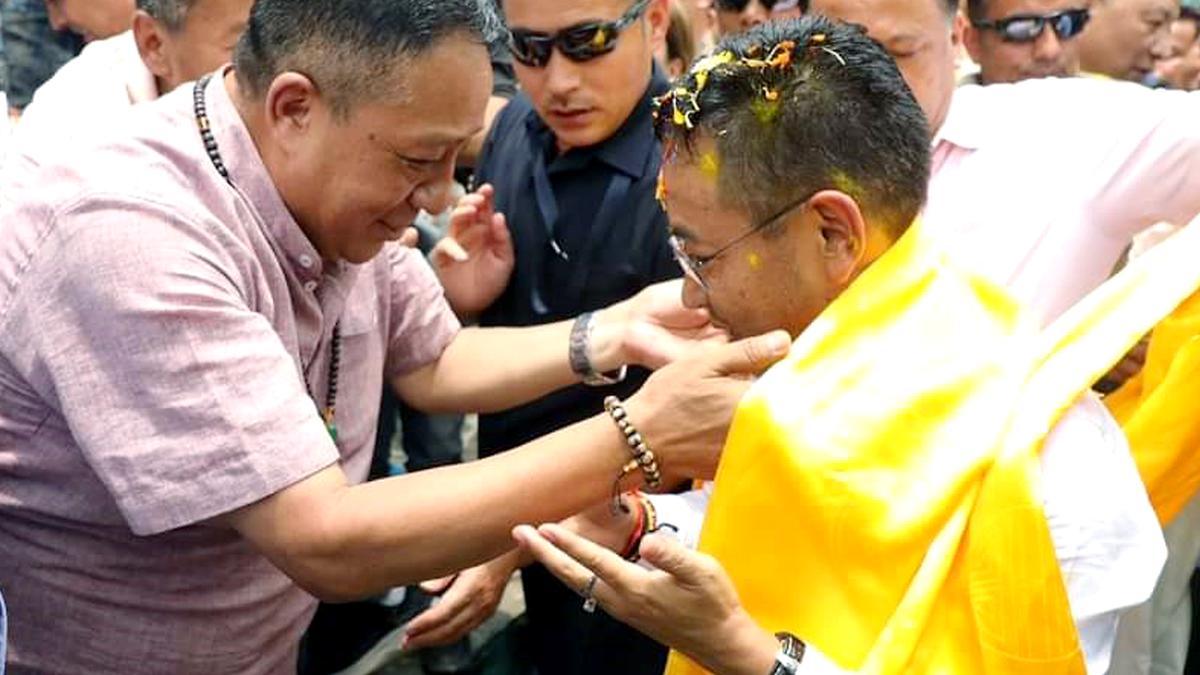
A vote for regional aspirations in Sikkim Premium
The Hindu
What the Sikkim Krantikari Morcha’s win means
In 1975, the people of Sikkim, comprising indigenous Lepcha, Bhutia, and Nepali ethno-cultural groups, became citizens of India. Since then, they have remained hostile to the imposition of what they see as nationalist projects. Sikkim has always been ruled by regional forces; its politics is embedded in the lived experience of the Sikkimese people. The results of the 2024 Assembly elections in the State once again reinforce this.
The elections were seen as a contest between the ruling Sikkim Krantikari Morcha (SKM) and the Sikkim Democratic Front (SDF). The SKM stormed back to power winning 31 of the 32 Assembly seats. The leader of the SDF, the five-time Chief Minister Pawan Kumar Chamling, lost both the seats he contested. The SDF managed to win just one seat.
The SKM’s victory can be attributed to many reasons. The first is the shift in narrative. SKM leader Prem Singh Tamang highlighted the SDF’s predicament in delivering Scheduled Tribe (ST) representation for Limbu-Tamang communities in the State Assembly, and promised parivartan (change). He also mobilised the sentiments of about 11 Nepali communities which have not been granted ST status yet.
Second, Mr. Tamang appealed to younger voters. The SKM’s ‘vote for jobs’ narrative struck a chord with the people. It equally allowed the incumbent Chief Minister to change his image. Mr. Tamang had been convicted in a graft case and served a one-year term in prison between 2017 and 2018. This attracted the provisions of the Representation of People Act, debarring him from being an electoral candidate for six years from the date he was released. The Election Commission in 2019 reduced the disqualification by almost five years. The Opposition has been protesting that Mr. Tamang’s swearing-in in May 2019 was illegal. But people’s memories are short and Mr. Tamang is now known as a pro-people Chief Minister.
Third, the SKM was also imaginative with its social media campaigns compared to the SDF and BJP. This also appealed to the younger voters.
The mandate that the SKM has received reveals a political space bereft of a credible Opposition and brings four decades of Mr. Chamling’s dominance to a closure.
The Bharatiya Janata Party (BJP) contested the election in the backdrop of the Finance Act of 2023, which expanded the definition of Sikkimese beyond Lepcha, Bhutia, and Nepali to include ‘other’ Indian citizens settled in Sikkim. This apparent effort to enfranchise non-Sikkimese in the Sikkimese political space caused concern. There was also fear following the dilution of Article 370 in Jammu and Kashmir that the government would dilute Article 371F of the Constitution, which provides for the unique status of Sikkim. It is not surprising then that many BJP MLAs switched to the SKM. The BJP’s candidates, who were mostly from the upper castes, did not do enough to appeal to the regional aspirations.











